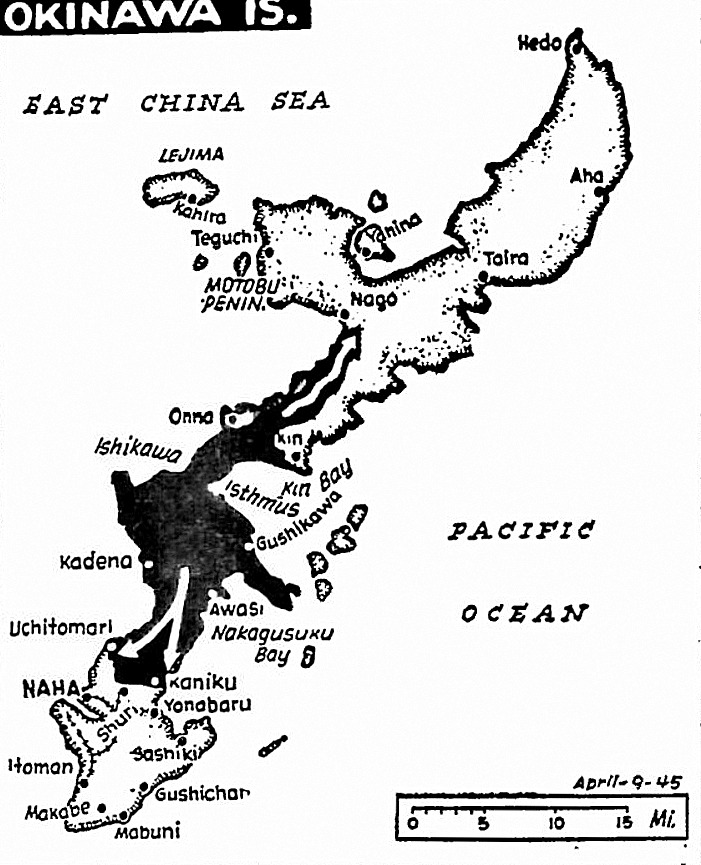Wedge driven into Jap line on Okinawa
U.S. invaders seize third of island
Gaining on Okinawa, U.S. forces held more than a third of the Jap island. On the southern sector, U.S. Army troops drove a wedge into the Jap defense line above Naha. On the north, U.S. Marines drove to cut off the Motobu Peninsula.
GUAM (UP) – U.S. Tenth Army troops have wedged into the enemy’s first major defense line before Naha, capital of Okinawa, in fighting approaching the fury of the bloody Iwo campaign, front reports said today.
Casualties on both sides were mounting, but the Americans were killing three to 18 Japs for every American killed, United Press writer Mac R. Johnson reported from the invasion flagship.
Soldiers of the XXIV Corps penetrated the first Jap defense line in slugging advances of 200 to 400 yards yesterday after capturing Uchitomari, four miles north of Naha, and Kaniku, 4½ miles northeast, Saturday.
Hold third of island
The advances, coupled with an almost unopposed Marine push in Central Okinawa, brought one-third or more of the island under American control as the invasion entered its second week.
As on Iwo, the Jap defenders of Naha were fighting from caves, interlocking pillboxes and other strongpoints on heights from which they could sweep the advancing Americans with crossfire.
Frequent hand-to-hand combats were developing as the Americans hit deeper into defenses manned by upwards of 60,000 Japs. One knoll alone was found to have as many as 15 entrances to its underground tunnels and caverns, where large quantities of supplies and ammunition were found.
At night, the Japs were attempting their favorite tactics of infiltration. Some American troops were killing Japs within two or three of their foxholes in the night blackness.
Japanese batteries opened fire on American guns emplaced on Keise Island, some eight miles west of Naha, and a violent artillery battle followed. U.S. battleships silenced the enemy guns.
Use captured airfields
Despite the fury of the fighting, Col. Brainard Prescott of East Aurora, New York, a Tenth Army staff officer, said casualties on Okinawa were much less than originally estimated.
Marines of the III Amphibious Corps drove another 3,000 to 4,000 yards north along the Motobu Peninsula in Central Okinawa against almost nonexistent resistance.
The advance was rapidly cutting off the peninsula and threatening to engulf 17 villages. Its pace indicated the Marines soon would have all Northern Okinawa in their hands, enabling them to turn back south to reinforce the drive on Naha, a city of 65,000.
Marine fighters were already using the two captured airfields in Central Okinawa.
Thirteen enemy planes were shot down by U.S. aircraft and anti-aircraft guns Saturday and Sunday in the Okinawa area.
By Saturday night, a communiqué said, 30,000 Okinawa civilians were being cared for by the U.S. Military Government on the island.
